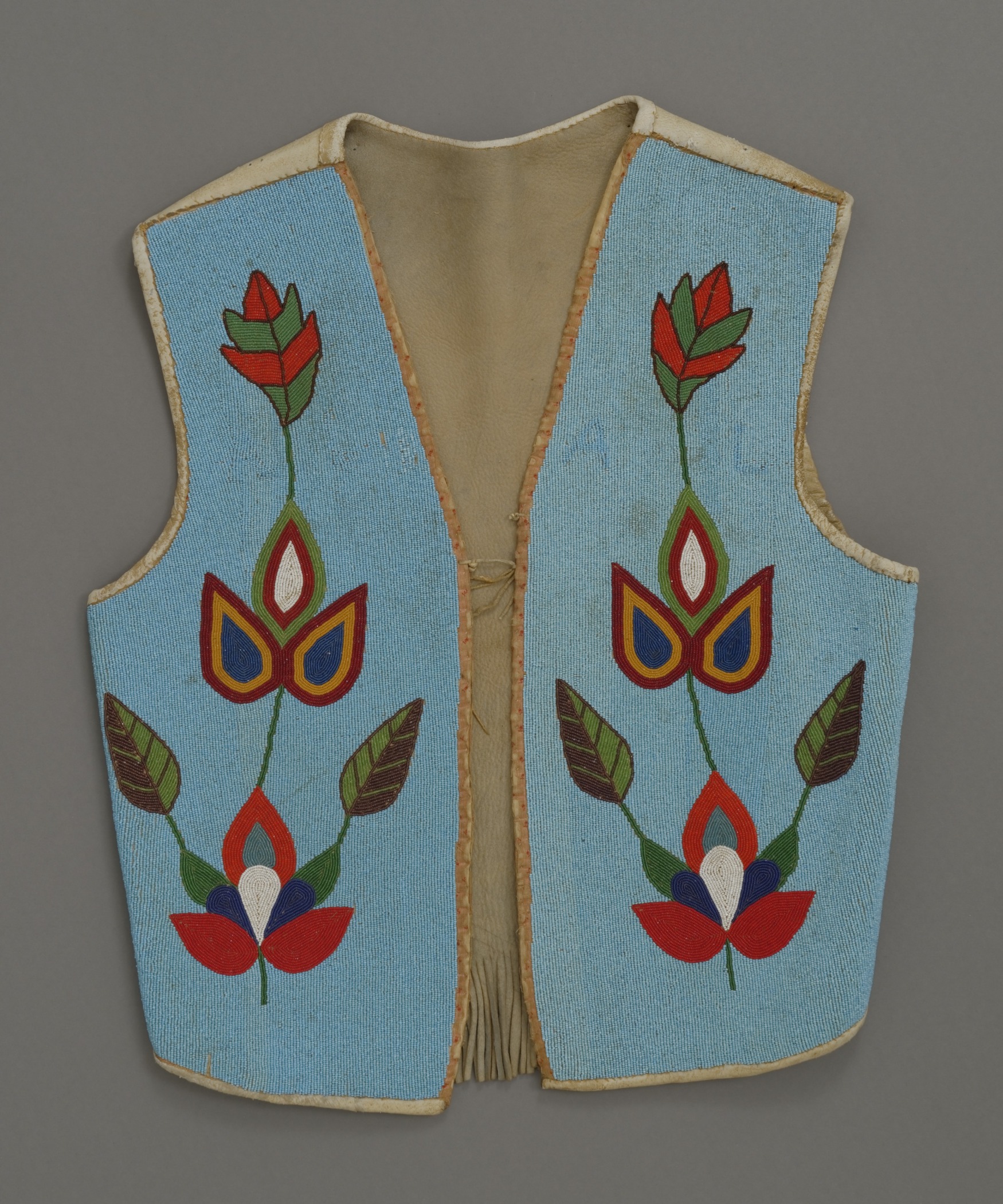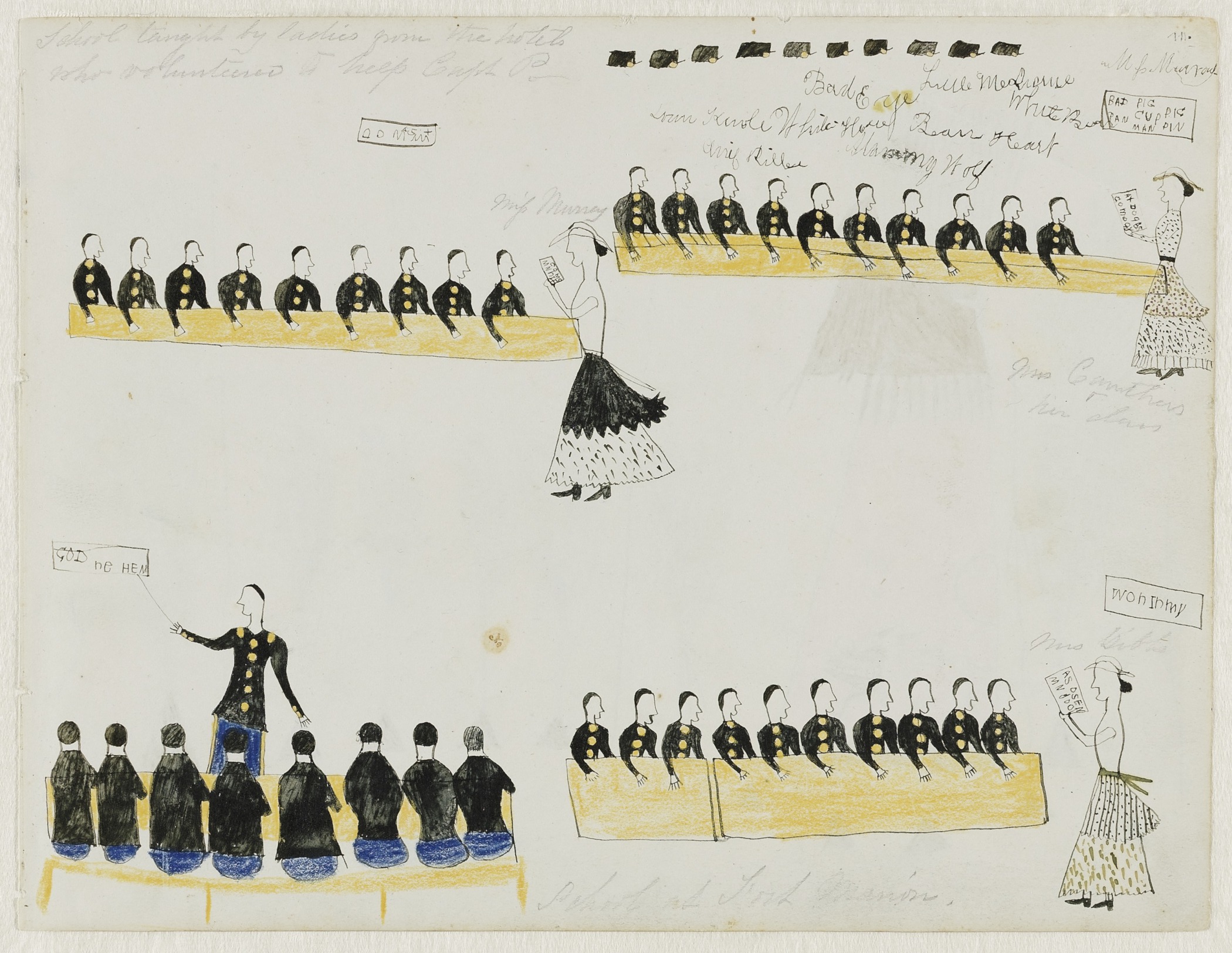Niitsitapii (Blackfoot/Blackfeet)
Gun case
- About 1890
- Native-tanned hide, glass beads, wool cloth, clay wash (possibly), and thread
- 42 1/2 in.
Hood Museum of Art, Dartmouth College: Gift of Guido R. Rahr, Sr., Class of 1951P; 985.47.26569
visibilityLook & DiscussBefore the 1860s, Great Plains hunters and warriors primarily used bows and arrows as weapons. Prior to that date, they did not have access to guns. The introduction of the rifle, which was light to carry and easily loaded, changed everything.
explore the Object
Plains tribes first acquired guns from French and British traders. A common price for a gun was a stack of furs as high as the rifle. They continued to use bows and arrows for hunting, but preferred rifles in battle because of their greater range, accuracy, and penetration.
As A’aninin curator George Horse Capture explains:
Long ago, when a small tribal group had a conflict with another for some reason, casualties were minimal because they were equally armed with bows and arrows, spears, and large shields. Their encounters usually consisted of shouting insults at each other, throwing rocks, and other non-lethal activities. In the early 1700s, when guns came from the east, the entire world of the Indian people changed. The weapons of the Indian people were mostly ineffectual against the gun, whose bullets could penetrate the hide shields. The tribes who established relationships with the Anglos soon had the gun and would rule the Plains. Whether on horseback or on foot, one had to carry the guns, and the Indian people soon decorated their scabbards or gun cases with their colors and tribal designs. (Native American Art at Dartmouth)
The making of ornamented gun cases is a carryover from the traditional practice of decorating quivers or lance covers. The gun, like other weapons and pipes, was an item of prestige and warranted special treatment. Men hunted deer or elk for their hides. Women tanned the hides, then constructed and embellished the case with beadwork, tacks, and fringe. Most gun cases of this shape and size were made to fit the Winchester repeating rifle.




